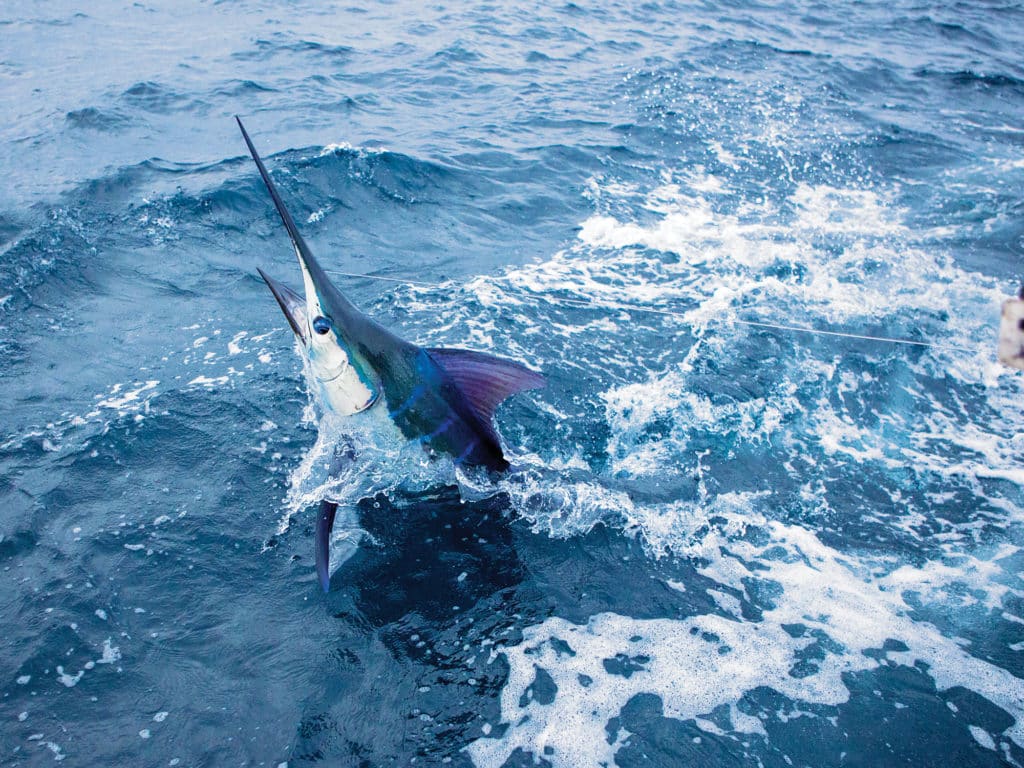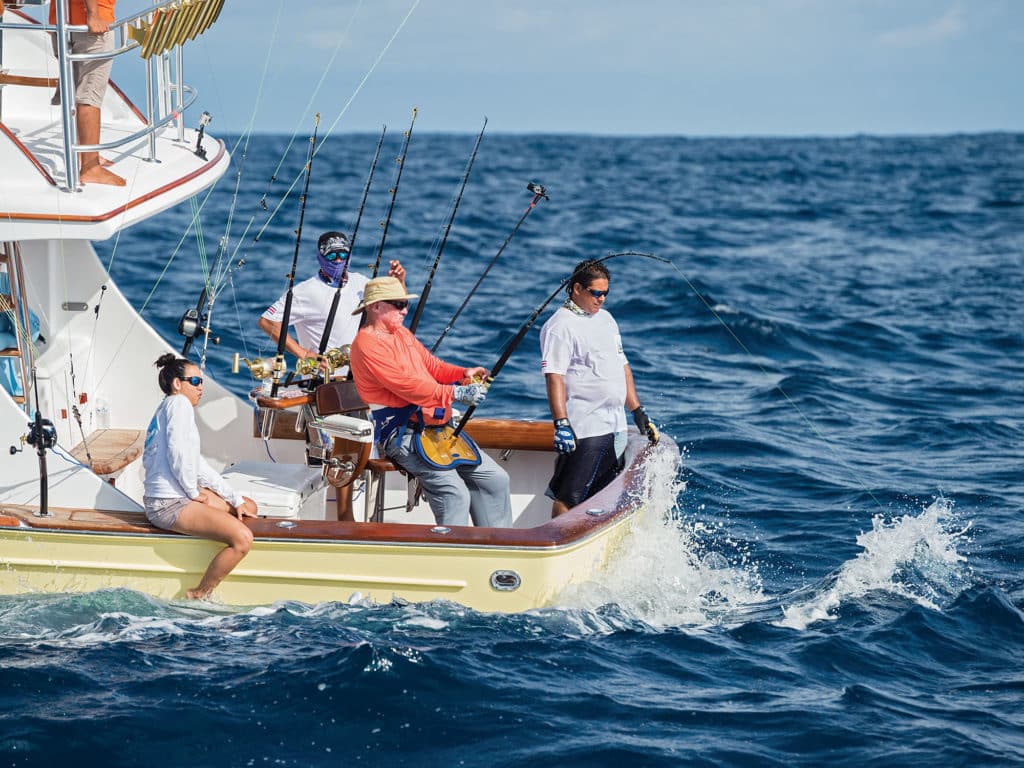
Back down:
I stumbled into the cockpit, but not before Michael Downer, who was already watching Dragin Fly put a marlin in the air a few hundred yards off our port side. We forgot that fish when our own first marlin of the day, a nice blue, struck in the glow of false dawn. Downer was on the rod immediately and went to work while the marlin jumped and shook violently. He had the fish boat-side and released before there was enough light to even take a photo. It wasn’t long before the sky brightened enough to shoot pictures, and we were hardly short of opportunity. One after another, four blues came to the spread, three of which we fought and released. By the end of the first hour of fishing, we’d tallied four blue marlin. We still hadn’t had the time to brush our teeth. And we didn’t get it.
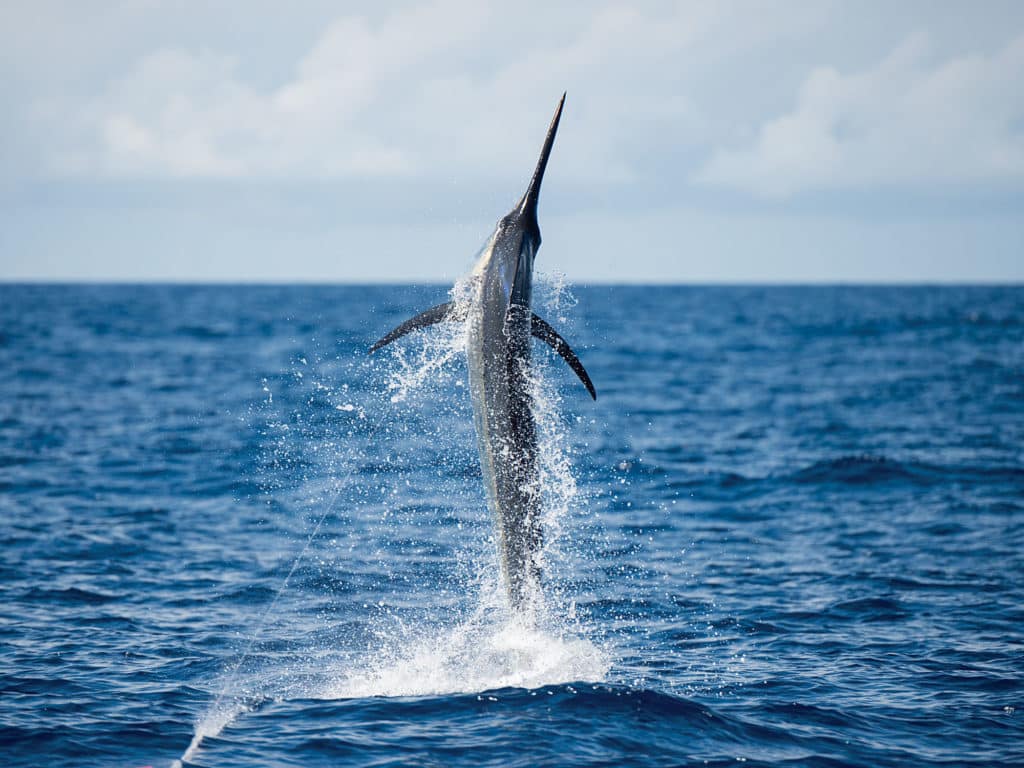
Blue Sky
Nonstop Action
The blues came in quick succession. Then, as we were pulling in the baits to refresh them, a striped marlin of about 60 pounds came out of nowhere and grabbed one. And he brought company. Shortly into the battle, a second stripe hit a short bait, and then a third piled on another we had just tossed over the side. After we added those three to our count, the flurry of striped marlin faded, but then the blues showed up again. By 9:30, we’d released a total of six blues and three stripes. By 10:15, our count had climbed to 10 fish: seven blue marlin in the 200- to 250-pound range and three stripes running from 60 to 90 pounds. Quite a way to start a day. And we weren’t done yet.
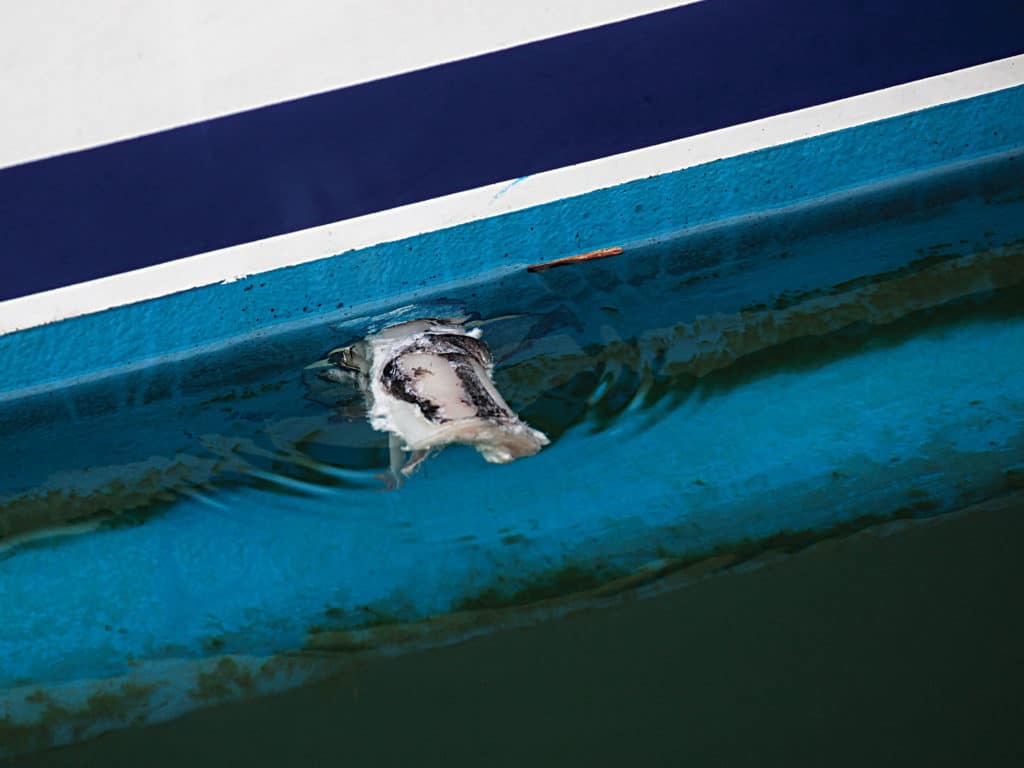
BATTLE SCAR
Rich Grounds
After traveling all night, we’d arrived at the fishing grounds in the wee hours. We’d steamed away from Los Sueños, Costa Rica, in the late afternoon on the 43-foot Maverick Spanish Fly, running at speed until darkness settled in, then motoring slowly through the night to eat up distance while conserving fuel for fishing and the eventual return to port. Eight of us were on board the charter boat: Larry Drivon, owner of Maverick Yachts and Maverick Tours; anglers Michael Downer, Bim Lebo and me; Capt. Danny Espinosa at the helm; and the capable crew of Capt. Juan Carlos “Juanca” Fallas, Walton Smith and Roberto Salinas.
Our destination: deepwater seamounts some 140 miles west of Los Sueños, sitting in the cooler, bait- and marlin-rich gyres along the eastern edge of the Humboldt Current. That’s where we found ourselves when the lights snapped on and the marlin fishing unfolded as it does nowhere else on the planet.
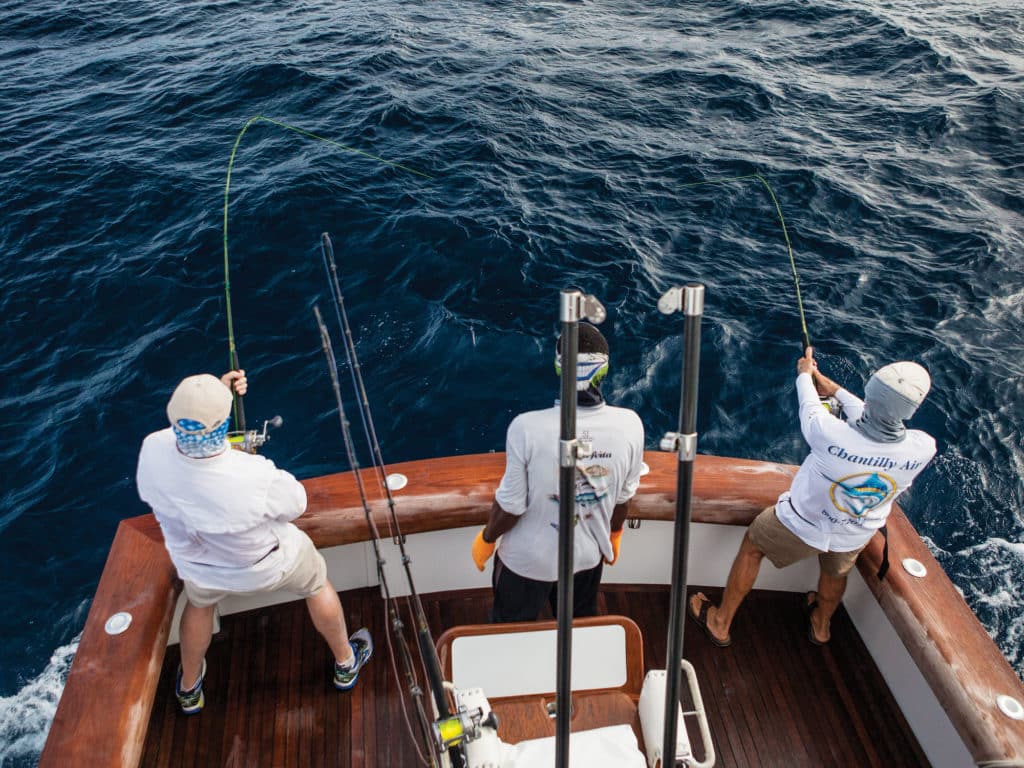
Double up
All-Day Tactics
Our strategy remained the same: keep the tuna tubes stocked and troll a spread of bridled live bonito. A pair of electric reels in the covering boards kept a half-dozen No. 00-RBS Clark spoons, crimped to 6-inch droppers spread at 3-foot intervals on an 80-pound leader with a tail spoon, deployed just off the transom corners all day. Bonito readily hit the bait rigs, providing a constant supply of fresh live baits, which were then bridled to a 10/0 circle hook crimped to 25 feet of 200-pound leader, compression-sleeved to a 10-foot Day-Glo orange braided Dacron wind-on leader, looped to the 30-pound line on the reels.
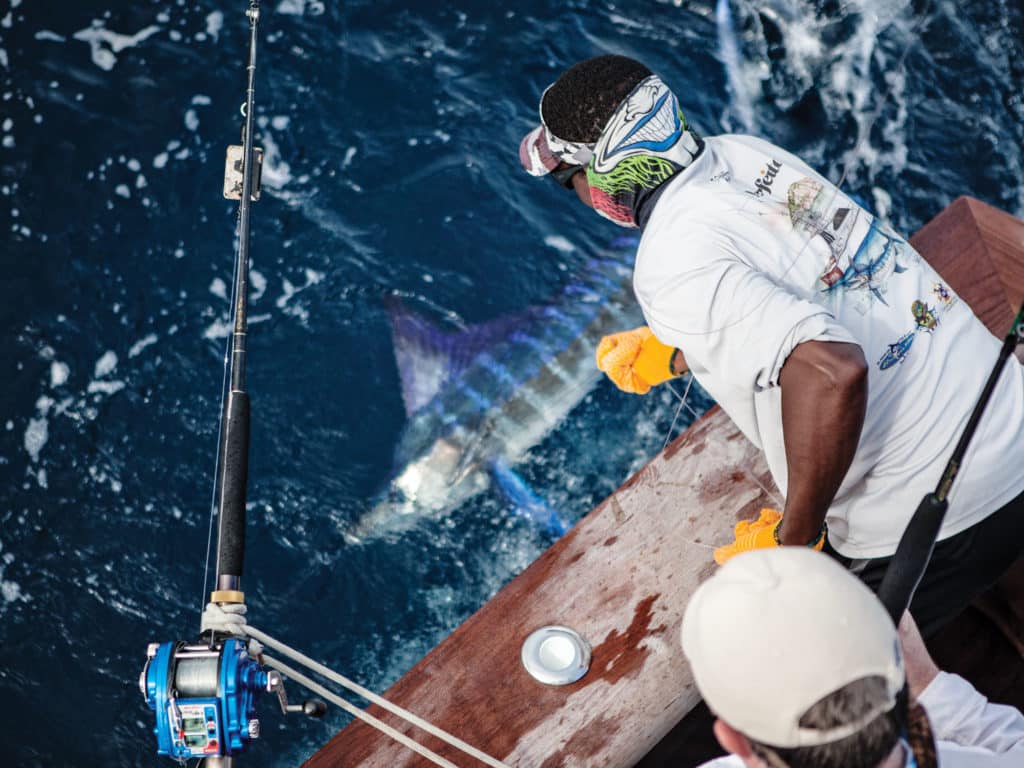
Last Gasp
Reset the Bar
Following a midday lull, the fish lit up again in the early afternoon. The action kicked in at a slightly less frenetic pace than in the morning, but then again, everything is relative, and the bar had been set higher than any of us had seen before in marlin fishing. “This bite is the best I’ve ever seen in 30 years of offshore fishing,” Espinosa remarked. That said, the afternoon rolled by with a steady stream of acrobatic battles and healthy releases, and by dinnertime, our total for the day stood at 22 marlin: 18 blues and six stripes. When you’re in the middle of a dark ocean, more than 100 miles from port, there’s not much to do after sundown. So we simply set out a sea anchor, drifted, and slept through the night, exhausted but looking forward to what the next day would bring.
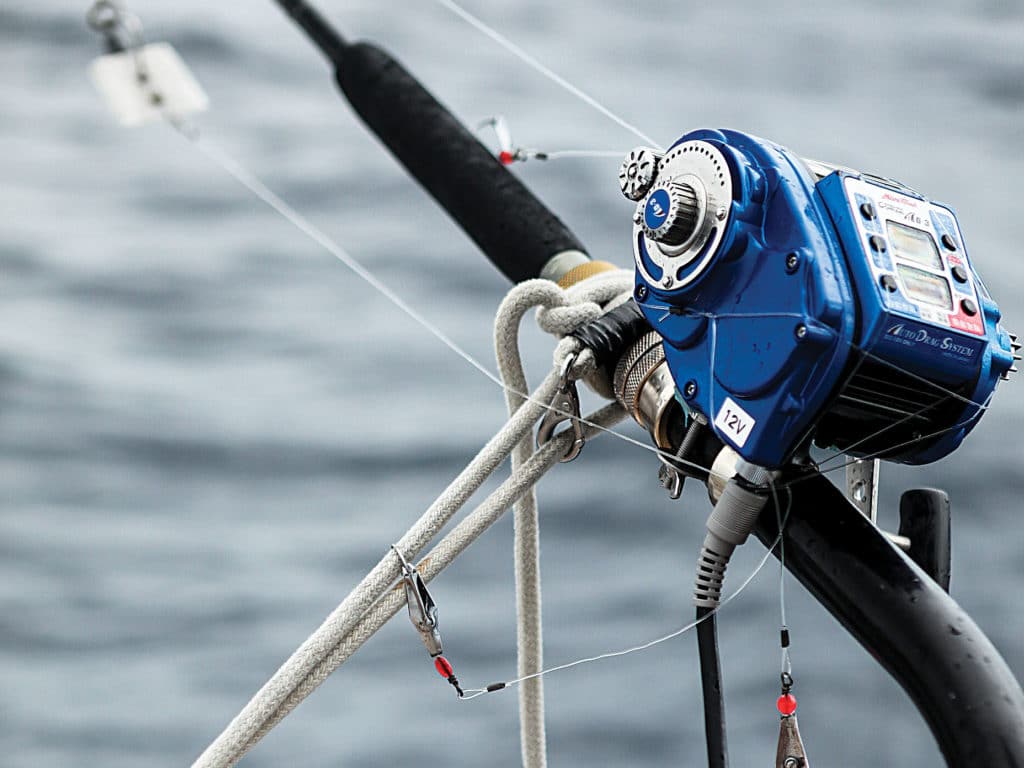
Fresh Bait
Brunch-Time Blues
By our newly calibrated expectations, the next day started slowly. Lebo jumped on the rod when the second fish of the day hit, but he soon began to question that move. The fish ran long, then went deep, and three times Lebo regained the line only to lose it again. After half-an-hour, he called for the shoulder harness, then settled back for the prolonged fight. An experienced tournament angler, he rested when the fish moved and worked when it tried to rest. After an hour and 15 minutes, he finally had the marlin behind the transom, lit up and still full of spunk, but clearly whipped. Juanca leadered the blue, and after a couple of head-shaking sessions, he clipped the hook short against the fish’s jaw. The crew called the weight at 450 pounds. Nice work on 30-pound tackle.
Next, another blue came in hot and whacked a couple of baits. Smith picked up a rod, but the fish seemed to have faded off. As he reeled in the mangled bait to replace it, a marlin crashed it, hit on a dead run, then jumped and briefly hung, frozen in space, like a mount on the wall.
The fish, obviously intent on feeding, took the bait solidly and headed for the horizon in a series of greyhound leaps as Drivon took the rod and settled into the fight. Again we had an above-average fish, another chunky blue at about 350 pounds, and Drivon made short work of this one.
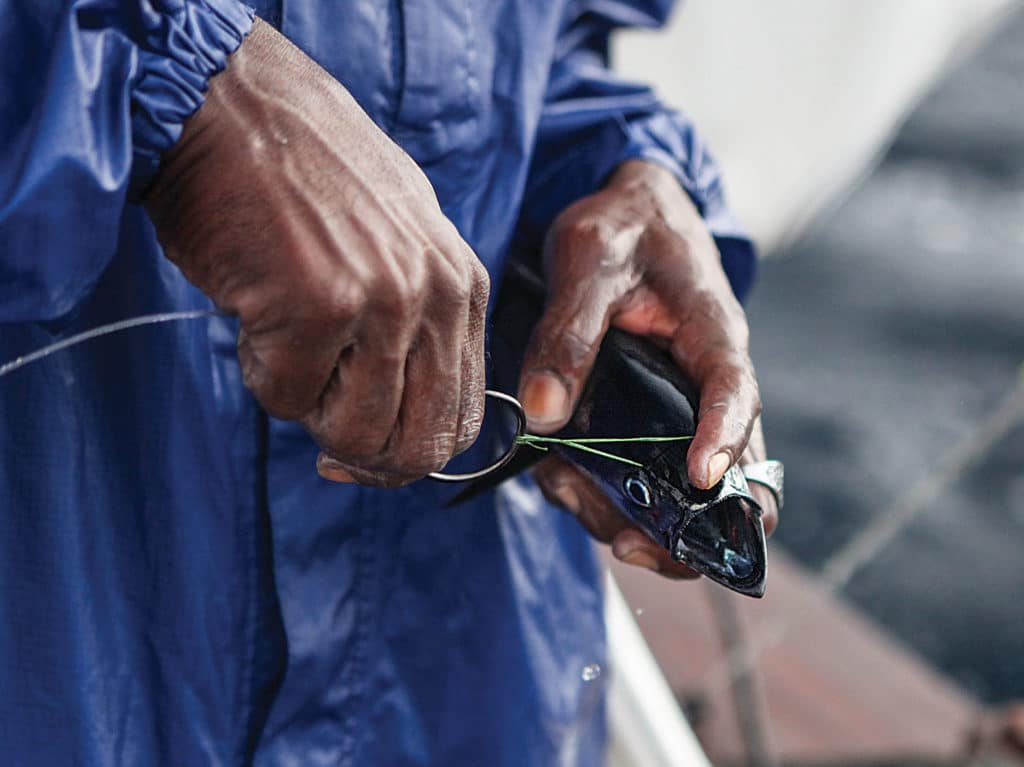
Bridle Up
Grand Total
We wound down the morning with two more garden-variety blues for a total of four before 10:30, when it was time to point the bow east for the run back to Los Sueños. A day and a half on the open Pacific showed us marlin action at a level that nobody in our group, captain and crew included, had experienced or could have anticipated. But action like this is hardly unexpected at these seamounts. Our final count was 26 marlin: 22 blues from 200 to 450 pounds and six stripes in the 60- to 90-pound range. You could fish a lifetime and never see that much action, nor gain that much experience, in so short a time
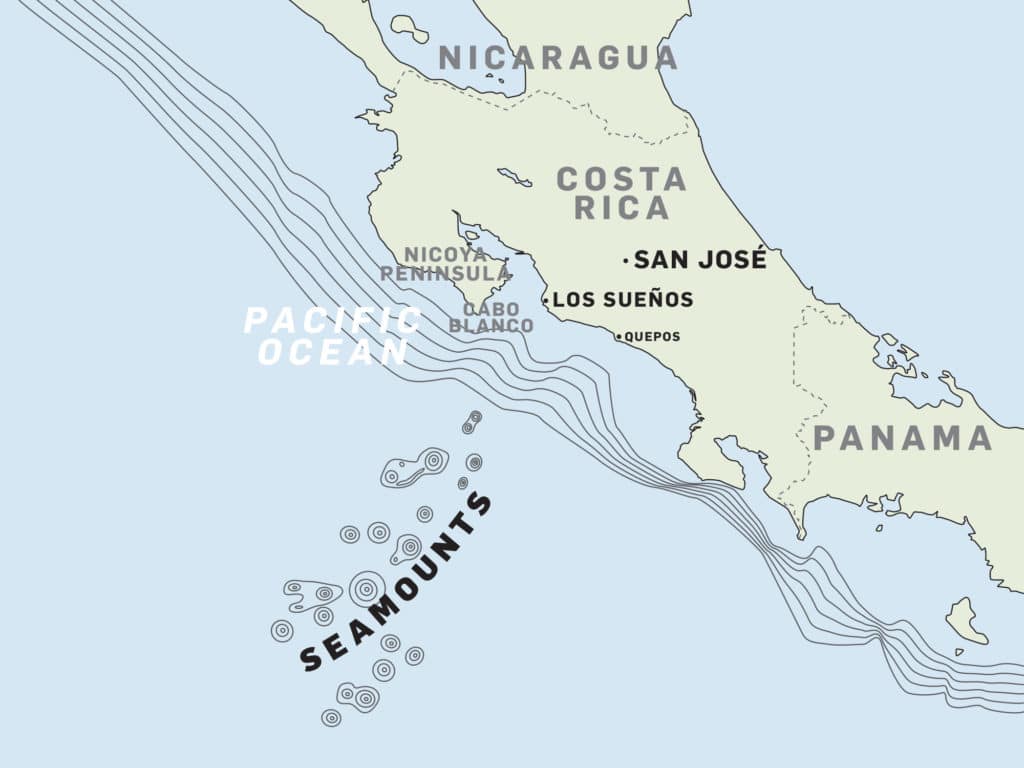
Far Flung
